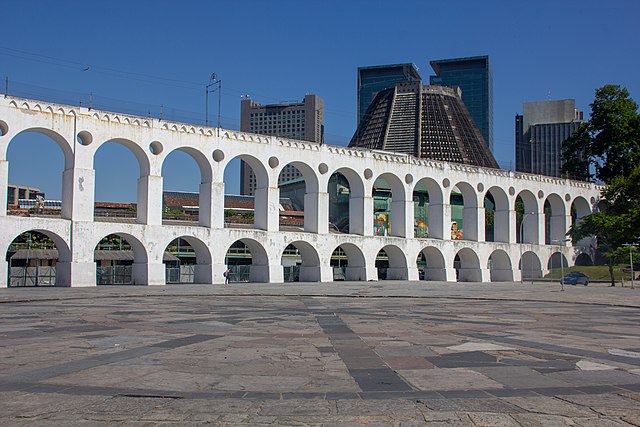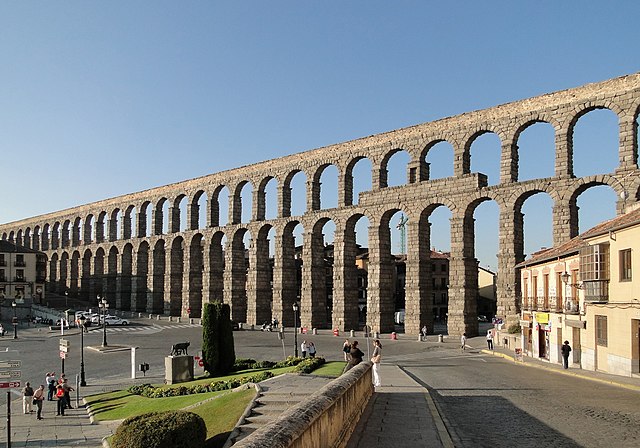The Carioca Aqueduct, also known as Arcos da Lapa, is an aqueduct in the city of Rio de Janeiro, Brazil. The aqueduct was built in the middle of the 18th century to bring fresh water from the Carioca River to the population of the city. It is a typical example of colonial architecture and engineering.
Carioca Aqueduct
The Carioca Aqueduct by painter Leandro Joaquim (c. 1790). Santa Teresa hill and its convent are seen to the left. The lagoon in the foreground was landfilled to build the Passeio Público
Panoramic view
Aqueducts are bridges constructed to convey watercourses across gaps such as valleys or ravines. The term aqueduct may also be used to refer to the entire watercourse, as well as the bridge. Large navigable aqueducts are used as transport links for boats or ships. Aqueducts must span a crossing at the same level as the watercourses on each end. The word is derived from the Latin aqua ("water") and ducere, therefore meaning "to lead water". A modern version of an aqueduct is a pipeline bridge. They may take the form of tunnels, networks of surface channels and canals, covered clay pipes or monumental bridges.
Pont du Gard, France, a Roman aqueduct built circa 40–60 CE. It is one of France's top tourist attractions and a World Heritage Site.
Mathur Aqueduct, India, built in 1966
Aqueduct of Vanvitelli, Italy, built by Luigi Vanvitelli. It is a World Heritage Site.
Aqueduct of Segovia







